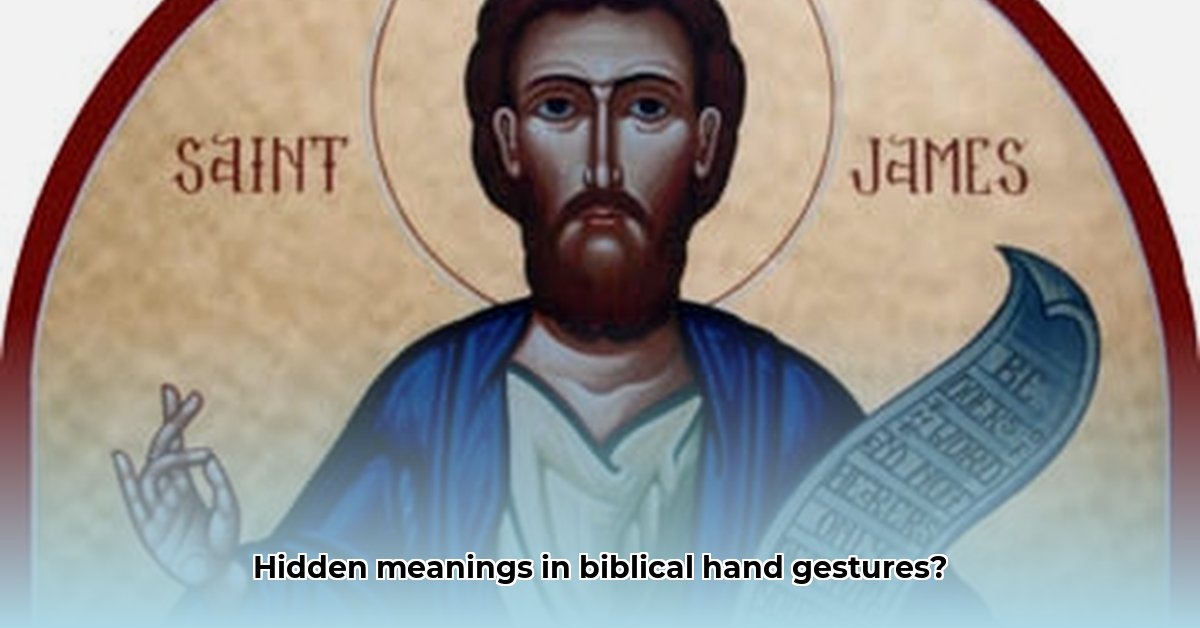
Biblical Hand Gestures: A Silent Language of Faith
Have you ever considered the unspoken narrative woven into the Bible's descriptions of hand gestures? These aren't mere incidental movements; they communicate powerful layers of meaning, reflecting the cultural and spiritual context of their time. Consider the hand of God shaping the cosmos—a vivid image of both creative power and meticulous artistry. The same hand that formed Adam from dust also heals, bestows blessings, and executes judgment, revealing the complex duality inherent in divine action. Understanding these gestures requires discerning the nuances of posture and movement, crucial elements in deciphering their intended message. What seemingly simple actions—an outstretched hand, a clenched fist—reveal about God's active engagement in human affairs? The answer lies in examining the historical context, the artistic representations, and the theological implications of these gestures. For more on Jesus's hands, see this helpful resource: Jesus' Hands.
Jesus: Hands of Healing and Sacrifice
The Gospels are replete with powerful portrayals of Jesus' use of hand gestures. His gentle touch, for instance, extends beyond physical contact to encapsulate his profound love and miraculous power. Consider the impact of his outstretched arms on the cross – a potent symbol of ultimate self-sacrifice, a love that embraces all humanity. These actions are not simply physical; they are loaded with profound theological significance.
The Old Testament similarly employs hand gestures to convey powerful emotions. The raised hands in prayer, a timeless gesture across cultures, signifies a profound dependence on a higher power, reflecting a deep, yearning connection with the divine. These simple actions, repeated across millennia, resonate deeply with our own experiences of faith and supplication. How do these seemingly simple acts encapsulate profound spiritual realities? Scholars and theologians alike continue to grapple with this question.
Deciphering the Visual Language of Orthodox Christian Icons
Orthodox Christian icons, with their rich symbolism, provide another crucial lens through which to understand biblical hand gestures. The hand positions in these sacred images are meticulously chosen, each gesture conveying a specific theological narrative. Christ's hands, often bearing the wounds of crucifixion, serve as a poignant reminder of his sacrifice. Iconographers deliberately employed gestures as a visual language. How do these visual cues enhance our understanding of the biblical narrative? They serve as powerful visual cues enhancing our understanding of the divine story.
The "orans" position, for example (hands raised in prayer), and the blessing gesture each possess distinct meanings within the iconographic lexicon. Mastering these subtle distinctions requires a deep understanding of the historical and theological contexts and the artistic techniques employed. These images communicate as potently as the written word itself, revealing a rich silent dialogue between artist and viewer.
A Practical Guide to Interpreting Biblical Hand Gestures
To further explore this fascinating realm, consider this methodical approach:
- Locate: Identify biblical passages explicitly describing hand gestures.
- Analyze: Carefully examine the surrounding narrative, setting, and context.
- Compare: Look for similar gestures across different biblical texts and religious art.
- Interpret: Consider the theological implications of the gesture within the text.
- Connect: How does this gesture relate to broader themes of faith and spirituality?
This detailed approach is crucial for a nuanced understanding of this often-overlooked aspect of biblical communication.
Interpreting Subtleties: A Word of Caution
Interpreting ancient texts and religious imagery is a complex endeavor, often yielding multiple valid interpretations. Scholars approach these texts with diverse perspectives, resulting in varying explanations driven by their specific methodologies and scholarly framework. While some gestures may have relatively unambiguous meanings, others remain open to ongoing debate and scholarly inquiry. Therefore, embrace this exploration with an open mind, recognizing the richness of multiple perspectives. Dr. Elizabeth A. Clark, Professor of Religious Studies at Duke University, reminds us that "the meanings ascribed to biblical hand gestures are often fluid and context-dependent." This acknowledgement is crucial for rigorous scholarly analysis.
Key Takeaways: Unlocking the Secrets of Biblical Hand Gestures
- Biblical hand gestures are not arbitrary; they communicate profound theological and cultural meanings.
- These gestures often reflect ancient rhetorical traditions and symbolic practices.
- The interpretation of biblical hand gestures requires a careful consideration of historical context, artistic representation, and theological themes.
- Engaging with both textual and iconographic analysis leads to a richer understanding of the text's overall message.
- Ongoing scholarly discussion highlights the complexities and nuances of interpreting these often subtle yet potent gestures.